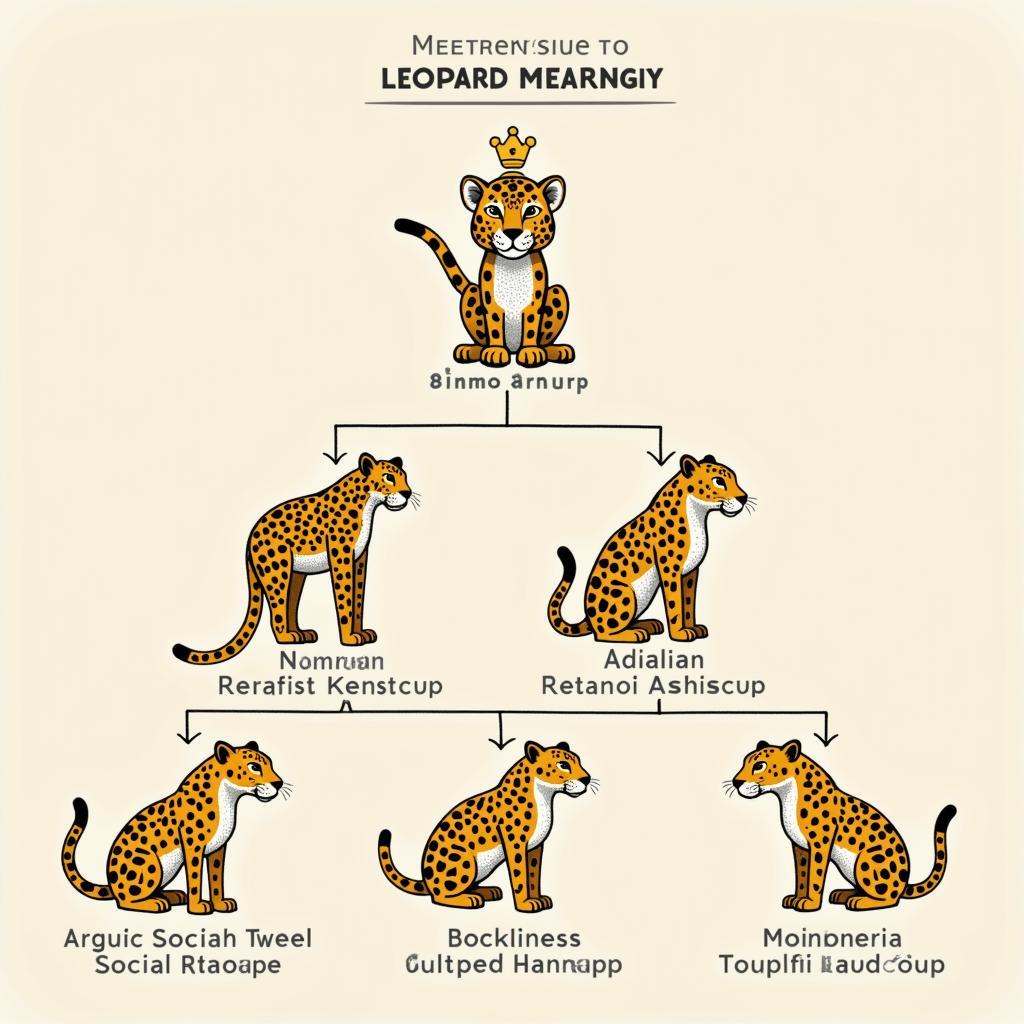The term “Leopard Society” often evokes images of secrecy and violence, conjuring up a sense of fear and misunderstanding. This article aims to delve into the complexities surrounding the concept of a “leopard society,” separating fact from fiction and exploring how we can promote peace and understanding in contexts where such groups have existed. We will examine the historical and cultural roots, analyze the social dynamics, and ultimately, advocate for a more nuanced and compassionate approach to fostering peace.
Unmasking the Leopard Society: Separating Fact from Fiction
Historical accounts of “leopard societies” often describe them as secretive organizations operating in parts of West Africa, particularly during the early to mid-20th century. These groups were often associated with ritual killings and the use of leopard skins and claws. However, the reality is often more complex than these sensationalized depictions. It’s crucial to understand that the term “leopard society” itself is a construct often imposed by outsiders, and the actual practices and beliefs of these groups varied significantly depending on the specific context. It’s important to avoid generalizations and instead focus on understanding the specific historical and social factors that contributed to the emergence of these groups.
One key aspect to consider is the role of colonialism and its impact on traditional power structures and social dynamics. The disruption of existing social orders, coupled with economic hardship and political instability, often created conditions where such groups could thrive. By understanding these historical contexts, we can gain a more nuanced perspective on the motivations and actions of those involved.
 Leopard Society in Historical Context
Leopard Society in Historical Context
The Social Dynamics of a Leopard Society: Power, Fear, and Control
Another crucial aspect to understanding “leopard societies” is analyzing the social dynamics within these groups. Who were the members? What were their motivations? How did they maintain power and control? These are essential questions to explore. Often, these groups exploited existing social tensions and anxieties, utilizing fear and intimidation to maintain their influence. It’s important to acknowledge the devastating impact of their actions on communities, while also recognizing the complex web of social and political factors that contributed to their existence.
Examining the power structures within these groups can also shed light on their motivations and operations. Were they hierarchical organizations with clear leadership, or were they more decentralized networks? Understanding these internal dynamics can help us understand how these groups functioned and how they exerted their influence.
 Social Dynamics within a Leopard Society
Social Dynamics within a Leopard Society
Building Bridges of Peace: Moving Beyond Fear and Misunderstanding
The path to peace lies in understanding, empathy, and a commitment to addressing the root causes of conflict. While the actions attributed to “leopard societies” were undoubtedly harmful, it’s crucial to avoid demonizing entire communities and instead focus on fostering reconciliation and healing. This requires acknowledging the past, addressing historical injustices, and working towards a future where such violence is no longer tolerated.
Education and open dialogue are essential tools in this process. By promoting accurate historical narratives and fostering cross-cultural understanding, we can dismantle harmful stereotypes and build bridges of communication. It’s crucial to empower local communities to take the lead in these efforts, ensuring that their voices are heard and their needs are addressed.
 Building Peace and Understanding
Building Peace and Understanding
Conclusion
The “leopard society” phenomenon represents a complex and often misunderstood chapter in history. By examining the historical context, social dynamics, and the impact of these groups, we can gain valuable insights into the root causes of violence and the path towards building a more peaceful future. We must move beyond simplistic narratives and embrace a more nuanced and compassionate approach to fostering understanding and reconciliation. Let’s work together to create a world where peace prevails.
FAQ
- What is a “leopard society”?
- Where did “leopard societies” operate?
- What were the motivations of “leopard societies”?
- How can we promote peace in communities affected by “leopard societies”?
- What are the long-term impacts of “leopard society” activity?
- How can we learn from the past to prevent similar occurrences in the future?
- What resources are available for communities seeking reconciliation and healing?
Need more help?
For further assistance and support regarding peace-building initiatives, please contact us:
Phone: 02043854663
Email: [email protected]
Address: Khu 34, Bac Giang, 260000, Vietnam
Our dedicated team is available 24/7 to provide support and answer your questions. You can also explore other related articles on our website, including resources on conflict resolution, community building, and promoting cross-cultural understanding.